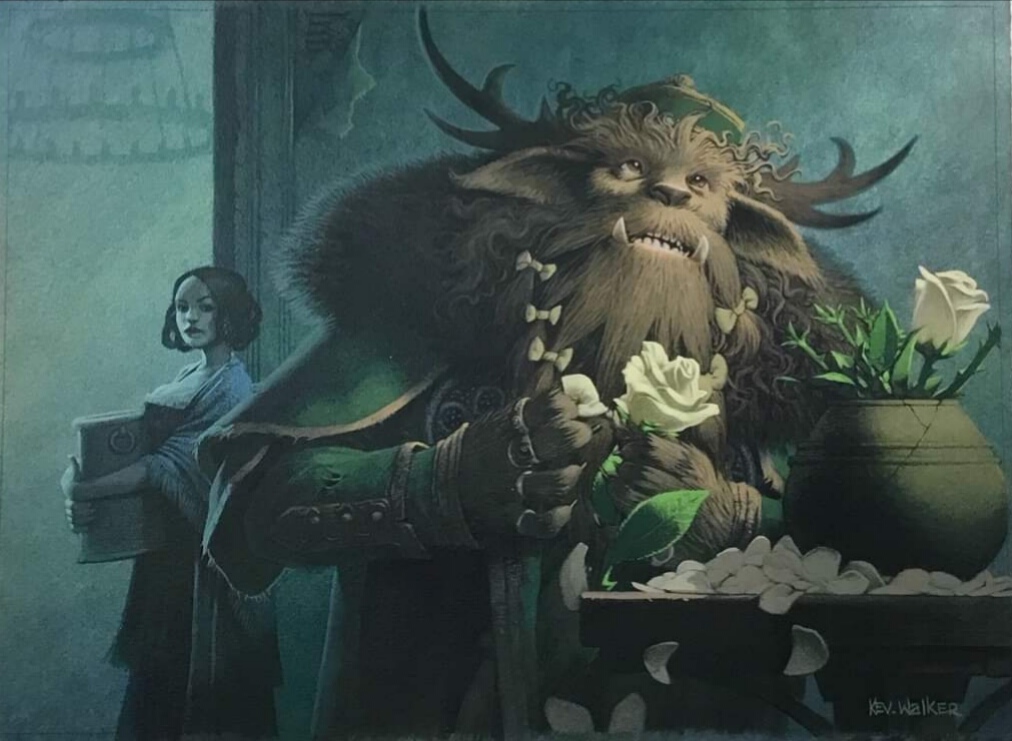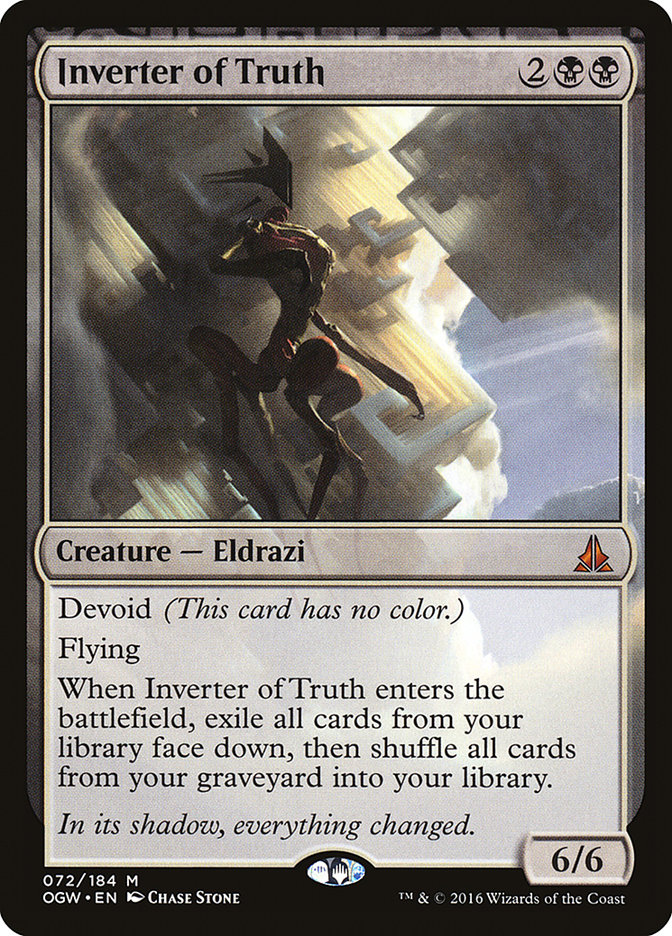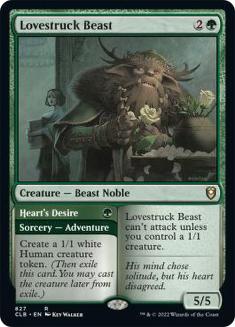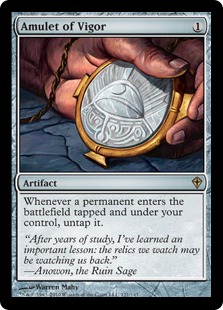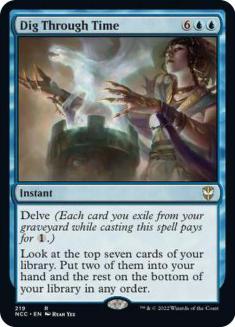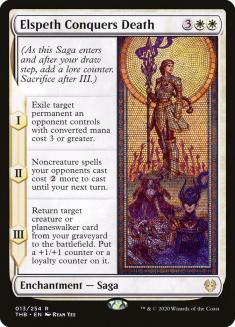Welcome to another edition of Fact or Fiction! Today, Emma Handy, Dom Harvey, and Ari Lax are here to give their takes on five statements about competitive Magic. Vote for your winner at the end!
1. Dimir Inverter is the best deck in Pioneer.
Emma Handy: Fact. At this point it doesn’t even feel like this is a question. When we have a deck that is doing well at this level of consistency, arguing in favor of something else is untenable.
As the format tries to adapt, I’m going to be interested in seeing what can actually beat the Push / Thoughtseize / Dig / combo deck. It already has the luxury of playing most of the best cards in the format, and then has the ability to slam the door shut against the aggro strategies.
Dom Harvey: Fact. This is the easy one. Dimir Inverter seized control of Pioneer at SCG Richmond and never looked back. Lotus Breach stole the spotlight at the Players Tour in Phoenix, but Inverter still dominated that tournament, the concurrent Grand Prix, and every event since. While Lotus Breach may be the best deck in the abstract, the deckbuilding demands of the combo and the sideboard space taken up by Granted targets make the deck inflexible and every other deck shares a powerful hate card in Damping Sphere. It’s no surprise that it failed to perform at SCG Indianapolis when everyone was in on the joke.
By contrast, Dimir Inverter is mostly unexploitable. There’s no one card that beats Inverter by itself. Even if there were, Thoughtseize makes it hard to rely on that or mulligan aggressively for it. The deck has the best disruption, the best removal, the best card in the format in Dig Through Time, and a game-winning combo that dodges typical interaction. Even the individual pieces of this combo can be independently useful – Inverter of Truth as an undercosted threat that stabilizes games or end them quickly and Jace, Wielder of Mysteries as a source of card advantage to enable the control plan.
To beat Dimir Inverter, your deck must be structurally sound against it and be built with its weaknesses in mind. The successful lists from SCG Indianapolis show how to do this. If you want to beat basically everything while holding your own against Inverter, you should play it yourself until they stop you.
Ari Lax: Fact. Thoughtseize, overpowered blue cards, and a proactive gameplan are historically great. Inverter of Truth is just a means to an end here, the win condition that cares the least about the random cards you leave them with after Thoughtseize resolves.
Whether it is unbeatable remains to be seen. Thoughtseize and blue stuff didn’t break the format before because The Scarab God isn’t quite the level of win condition needed. There’s a lot of incidentally reasonable ways to punish a small library and the combo: Collective Defiance, Ipnu Rivulet, Gideon of the Trials, and so on.
It won’t be easy to knock Dimir Inverter from the peak of Pioneer, but just like Death’s Shadow in 2017 Modern, it feels possible. The exploits exist. We just have to see if people can piece it all together.
2. Temur Adventures is the best deck in Standard.
Emma Handy: Fiction. Standard is still adapting on a week-to-week basis, and Temur Adventures is exploitable. The biggest thing that Temur Adventures has going for it on a fundamental level is that it’s the deck that can play the most Throne of Eldraine cards. Past that, finding a way to reliably attack the strategy in a way it would need to sideboard against is going to give the deck fits.
The deck is great at capitalizing against archetypes that give it a bit of breathing room during the early stages of the game. Taking a few turns off isn’t something you can really justify against a deck like Knights, and Temur gaining traction opens up space for aggressive decks to push ahead.
Dom Harvey: Fiction. Hailing a deck as the next big thing because one person won one tournament is usually a mistake. Hailing it as the best deck when nobody else has ever won anything with it is downright foolish.
Aaron Gertler’s amazing performance at DreamHack Anaheim was no surprise to those in the know. His sustained success with Temur Adventures before Theros Beyond Death garnered some attention but few people picked it up for major tournaments. It’s common in Modern that the same name with the same fringe deck keeps appearing in Top 8s to the confusion of everyone else: does Sodek win at an absurd clip because Dredge is great or because he is? If the game’s top players dusted off their Stinkweed Imps, could they do what he did? Gertler is forcing Standard players to ask similar questions.
Temur Adventures is certainly a smart call in a room full of Hallowed Fountains and basic Mountains. Decks like Jund Sacrifice or Temur Reclamation threaten to exploit it if it finally does become popular. If others can replicate Gertler’s results online or in paper, Temur Adventures will have earned consideration for that much-coveted title of “best deck.” Until then, expect to see a lot of Lucky Clovers in your next Standard event.
Ari Lax: Fiction. The Arena ladder metagame is a pretty bad judge of actual deck quality. Speaking from experience, Mythic matchmaking filters for quality opponents way less than longer Swiss events, but also the Arena economy stagnates deck selection because nothing is liquid. People don’t try things because that risks valuable wild cards and a random junk rare is worth the same as a staple land. They just play the same matchups over and over. And as a result of people not trying stuff the metagame remains static until an event causes an information cascade.
We have played one event where the deck wasn’t expected and it won. It revolves around key permanents on the battlefield or longer games. Wait for Mono-Red Aggro to start playing Embereth Shieldbreaker or for Heliod’s Intervention to show up, and then check on Temur Adventures’s results.
3. Amulet Titan is the best deck in Modern.
Emma Handy: Fact. Amulet Titan has been in a similar space as Legacy Death and Taxes for a couple of years now. That’s to say it happens to get new tools in every Standard set, as the archetype has always been a ragtag bunch of players from throughout the format’s history.
The big difference between Amulet Titan and Death and Taxes is that lands are more powerful than white cards and are much more difficult to interact with. This means that Amulet Titan started from a place of power and has been getting upgraded for several consecutive sets. Dryad of the Ilysian Grove has put the deck in a place where Amulet Titan doesn’t even have to attack to get its wins anymore.
That’s marked a tipping point from being a good deck to being the best thing in the format.
Dom Harvey: Fact. After Amulet Titan dominated SCG Richmond I expected a dramatic backlash at SCG Philadelphia. Instead, the deck was still by far the most popular Modern deck on Day 2 and made up half of the Top 4 and Top 8.
Are people just not trying hard enough or does it not matter? It’s unclear what the rest of the metagame even looks like given the lack of high-profile Modern tournaments since the bans. Heliod Company, the next most popular deck, is a seemingly tough matchup and other old foes like Death’s Shadow and Infect are waiting in the wings to cut Amulet Titan down to size. As an Amulet player I’m not sure what my good matchups are meant to be, but the deck is so fundamentally powerful that even your bad matchups are closer than thought.
Gifts Storm has always been the foil of big mana decks but I don’t know how true that is now unless you sideboard Blood Moon or your name is Caleb Scherer. Eli Kassis cut down every Primeval Titan in his path to win SCG Richmond with Dimir Urza, but could he repeat that if Amulet brought the tools to fight back?
Several of the SCG Tour’s top Amulet Titan pilots made the bold claim that the deck was as strong relative to the rest of the format as the Simic Urza menace was before the last round of bans. At first it seemed Amulet would be to Lotus Breach as Urza was to Inverter: Amulet is stronger but more exploitable, whereas Urza had such a hold over the format because there was no obvious counterplay. It’s currently unclear if the measures for keeping Amulet in check even work. Amulet is the best deck in the abstract and the best deck in context. In short, it’s just the best deck.
Ari Lax: Fiction. Amulet Titan is a very powerful deck. Merging the sledgehammer that is Primeval Titan with the fiddly toolbox that is the rest of the deck offers a lot of ability to crush people and win games from a variety of scenarios. It even utilizes many new cards, a great sign given the power increase of the last year.
But Dimir Urza is a Thoughtseize / Mystic Sanctuary / toolbox combo deck with a strong backup plan. We covered some of this earlier, but that’s super-broken. And it even plays more 2019-2020 cards than Amulet Titan.
Just let me know when it properly incorporates Underworld Breach, and that definitely will be the best deck in Modern.
4. It’s time to ban Dig Through Time from Pioneer.
Emma Handy: Fiction. Hot take: It’s time to look at unbanning some cards.
Rather than completely removing decks that people are playing at the moment, it’s a far better goal to look at reintroducing cards that may have been oppressive previously but would be more reasonable now.
It may sound silly to pitch this for a format as new as Pioneer, but there’s a strong case to be made for Field of the Dead struggling against the faster combo decks that Theros Beyond Death enabled. Felidar Guardian decks are strong but weren’t previously oppressive. Smuggler’s Copter is another card that, while strong, can enable interesting play patterns and strengthen decks that historically struggle in eternal formats.
It feels like some of the cards on the Pioneer Banned List were victims of Wizards of the Coast’s (WotC)’s heavy-handedness with Pioneer’s initial bans, and I hope that Wizards looks to reduce the size of Pioneer’s Banned List, rather than constantly expanding it.
Dom Harvey: Fact…reluctantly. Dig Through Time was always on borrowed time. When Pioneer was introduced with a minimalist Banned List, everyone assumed Dig would join it soon. It was a question of when, not if. As Dig survived several iterations of Pioneer, people began to ask if it was fine after all. Maybe the fetchlands and cheap cantrips in older formats were the real culprits all along?
The success of Dimir Inverter pushed that theory to its limits. Inverter is the best deck in large part because it’s the best Dig Through Time deck – it even manages to turn the delve cost into a unique upside, controlling the size of the library ahead of a combo turn. If Inverter disappeared it would only be a matter of time before some other deck became obnoxiously powerful thanks to Dig. If Dig dies it will not be for Inverter’s sins but its own.
Whether you want that to happen depends on your vision for the format. Some of the best Magic I’ve seen in recent memory has involved Inverter mirrors between strong players. I love that a deck as conceptually weird as Inverter can not only compete but dominate and I enjoy a format much more when the top decks have a distinct “personality” of sorts. If the best cards keep getting banned until Pioneer is little more than creature decks squaring off against Supreme Verdict, the format will be worse for it. Banning Dig doesn’t send you all the way down that slippery slope but part of me wants to avoid it altogether.
Ari Lax: Fact. This has always been a fact. We are just playing Pioneer with the notion of wanting to watch all the horrible things break first.
In every format we keep relearning the delve card draw lesson: if your card pool grows to include enough good one-cost cards, Dig Through Time and Treasure Cruise break. Dig Through Time tends to break faster because it takes less velocity to make insane, and because selecting two of seven cards lends itself to immediately game-winning effects. But Treasure Cruise breaks harder because it is more self-looping once critical one-drop mass is hit.
Honestly, I’m just shocked these cards lasted four months without causing huge issues. Maybe we just weren’t trying hard enough.
5. World Championship XXVI was the best Magic event of all time.
Emma Handy: No comment. As far as the prestige, the viewership, and the product as a consumer: absolutely. I struggle to fathom what Magic Esports could have done to improve the show as it was presented.
The tournament itself left a little bit to be desired in a couple of departments. The tournament formatting was easy to consume on a base level; anybody being featured was still live to win the tournament, and all of the matches had real stakes. Unfortunately, there was then a wide gap between “being invested in the match immediately in front of you” and “understanding where the tournament itself was going.” The formatting of the event wasn’t familiar to the greater Magic audience, and it felt that a bunch of time had to be invested in the explaining of the product.
For people in the tournament, the odds of actually succeeding in the event leaned so heavily in succeeding in the initial draft that it was difficult not to feel discouraged if the draft was a trainwreck. Feeling like an entire tournament is over before any games are played is miserable, and something that I’d like to see WotC try to mitigate in the future.
Aside from those two points, I think it’s important to reiterate how many aspects the show got right. The show was engaging, the pacing of the Limited portion of the event was absolutely top-notch, and it was the largest prize purse of any tournament in the history of the game. Wizards is heading in the right direction, and I think this event showcased their willingness to try stuff out to continue demonstrating that Magic is the best game of all time. It’s inevitable that it’ll have the best events of all time as well.
Dom Harvey: Fact. Being the World Champion is the ultimate accolade and it deserves a World Championship that can do it justice. Most recently, Javier Dominguez had become World Champion to little fanfare in an event that was poorly publicized, but things have definitely changed. It’s fitting that Paulo Vitor Damo da Rosa, perhaps the best player of all time, got to win the game’s biggest ever prize purse against the backdrop of its biggest production to date. With any luck World Championship XXVII will be even bigger and better with a less lopsided structure.
Ari Lax: Fiction. Standard wasn’t horrible but it wasn’t great. The format lacks real archetype definition, with just red aggro and generic big blue decks. Azorius Control looked laughably dominant, and Throne of Eldraine remains overshadowing for the rest of the format.
The event structure was a mess. Players were pushed to exhaustion on the final day, the first six rounds decided way too much of the event, and we all saw the numbers showing how four players held 90% of the equity while we spent half a day watching the other eight battle for scraps.
At some point, bigger numbers on the prize pool don’t mean anything. People don’t try six times harder for $300,000 as they do for $50,000 because there isn’t six times the effort to spend. The same people are playing the World Championship, so you aren’t firing up undiscovered talent.
World Championship XXVI wasn’t even the best event held in that convention center. I might be biased on that, though.
(I’m talking about Pro Tour Honolulu 2006 of course. What were you thinking?)

